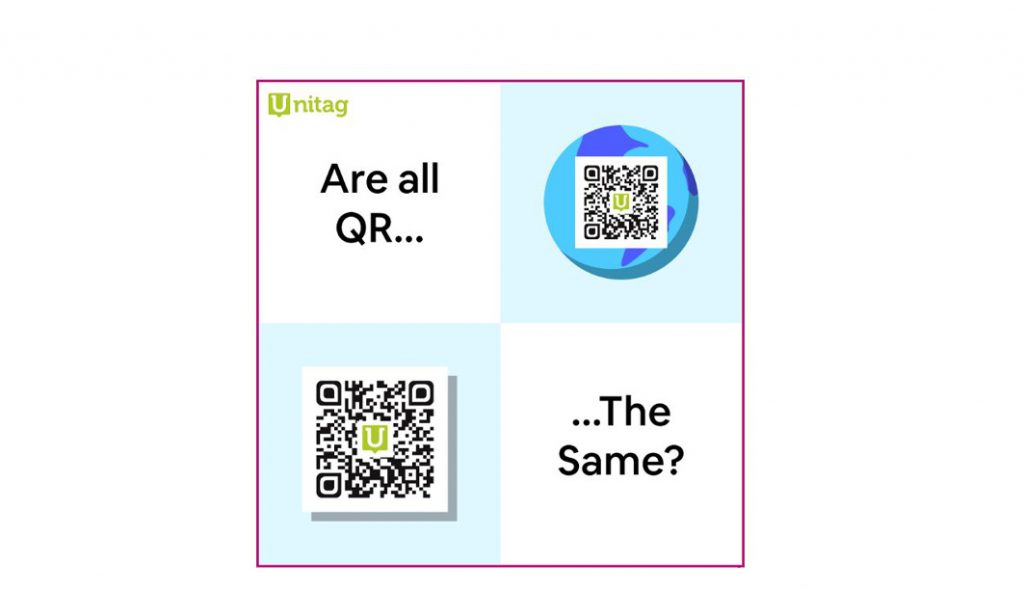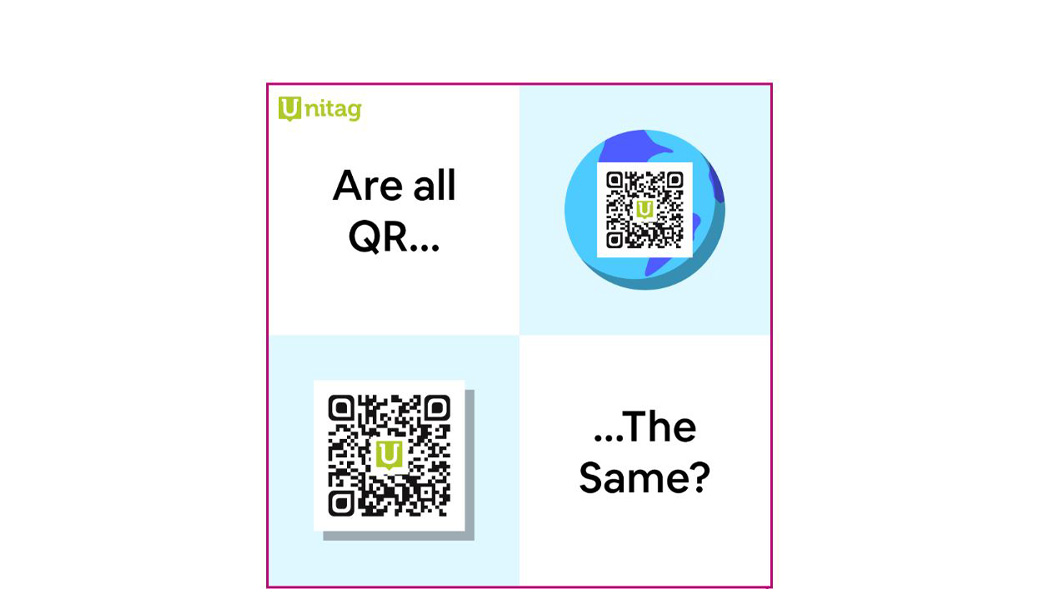
If you look at it at face value, all QR codes look pretty much identical – A square box with a grid of boxes with three “eyes” at its corners. It follows that all QR codes should be the same or similar in their function, right? Well, it’s more nuanced than that, and in this article, we shall explain the types of QR codes and their differences.
Static vs Dynamic QR
The most popular classification which pops up as soon as you search for “types of QR codes” is the distinction between Static and Dynamic QR. This is an important distinction, and the differences are explained below:
Static
A static QR code is, just as the name implies, fixed. The information contained in the code is permanently embedded in the code and cannot be altered.
All the information in a static QR code is contained in its pattern and its alignment. If the data needs to change, the entire code must be recreated. Also, the more information the code includes, the larger it has to be, as all the information is hard-coded.
Dynamic
As opposed to static QR, a dynamic QR code is a QR code that has only a short URL stored in its pattern. This gives this type of QR code the ability to change the data it contains simply by changing the data to which the URL points.
In addition to being changeable, these codes save on space as the URL doesn’t need a very large code. Additionally, these codes also come with tracking and analytics as the URL contained in them can be tracked for traffic and many other parameters.
Types by Architecture
Of course, both static and dynamic QR codes are built on the same architecture, but this architecture has evolved over a series of iterations and versions. There are several types of QR codes based on their underlying framework. Some of these are:
Model 1
Model 1 was the original QR code. While it is the oldest and simplest, it can still hold quite a bit of data as it’s capable of sizes up to 73×73. Although it has largely been replaced by Model 2 QR codes in most applications, there are still a few examples out and about.
Model 2
The successor to the Model 1, the Model 2 brings several tweaks and updates that make it objectively better. Model 2 code can size up to 177×177 and comes with more robust error correction, which means it’s scannable with up to 30% damage.
iQRC
iQRC, or intelligent QR Code, is a more capable variety of QR codes built on the foundation of Model 2 QR. Its significant advantages are an improved size range of up to 422×422, improved error correction of up to 50%, and the ability to be rectangular in shape. The downside is that not all phones work with it.
SQRC
SQRC, or Secure QR Code, is an encrypted QR code that can only be read with special QR readers with the code’s cryptogenic key. The code has two parts, a chunk of “public” data and an encrypted chunk of “private” data. If scanned by any device that cannot decrypt them, they’ll just display their public data. These codes aren’t for general use but can be helpful in sensitive applications where the data the QR code contains needs to be kept from prying eyes.
Types by Use
Now that we have discussed the various architectures a QR code can be built on, let’s delve into the different types of codes based on their usage.
Plain Text QR
Plain text codes are the most basic. All they contain is a string of alphanumeric characters. When scanned, the code just displays the text contained in its matrix. These are usually static and can be used to deliver simple messages.
Image QR
Another type that leverages the simplicity of static QR codes is the Image QR code. This type of code encodes an image in its matrix and, when scanned, displays that image.
Webpage QR
This type of QR code is what almost all dynamic QR codes are at their very core. This code has a URL to a webpage encoded in its matrix. It redirects the user to that webpage when it’s scanned.
Location QR
A location QR code is just what it says on the tin, a QR code whose matrix contains either the coordinates for a location or a link to the location on a navigation app like Google Maps. These can be useful when directing the user to a specific physical site.
vCard QR
This type of QR code encodes a vCard, (virtual visiting card). Once scanned, the user can store the information in the vCard directly in their phonebook. These are static codes and are extremely useful in use cases such as visiting cards.
Social QR
These are a sub-type of webpage QR but are mentioned separately due to their relevance. These QR codes contain links to social media accounts, pages, or events and can be used to direct people to specific social media apps and posts.
App Download QR
Usually employed in advertising mobile phone apps, these QR codes redirect the user to their specific app store to download a particular app. These can be useful in sponsorships, too, as they can provide a quick link to the app the sponsor wants the user to download.
Payment QR
QR codes containing a link to popular payment apps can be used to simplify payments for the user by redirecting them straight to a payment portal like Alipay, which had 711 users as of June 2020.
Final Wrap-Up
Now that you have a taste of what types of QR codes there are out there in the wild, we hope that you can better appreciate the potential of this simple patterned box.
If all these types seem cumbersome and you want to take the hassle out of creating sleek QR codes for your online campaigns, Unitag has all you need. Come look at our site and let us empower you with easy-to-use and effective QR code solutions.
